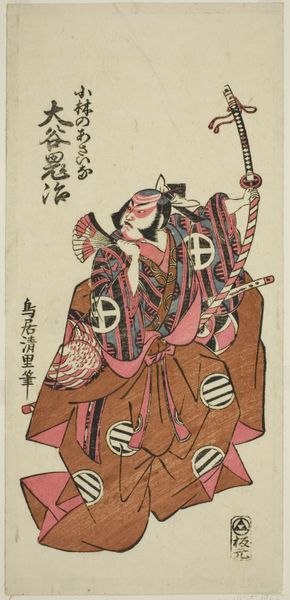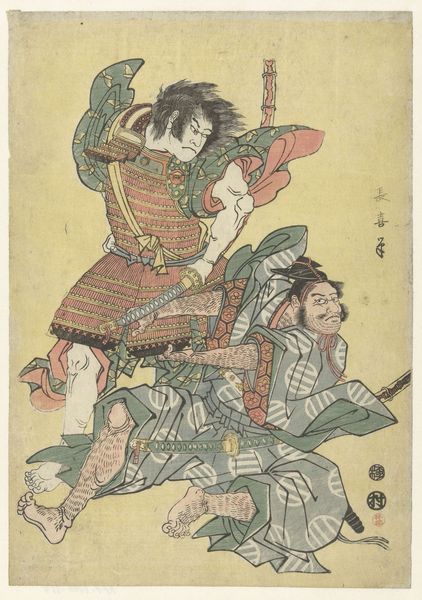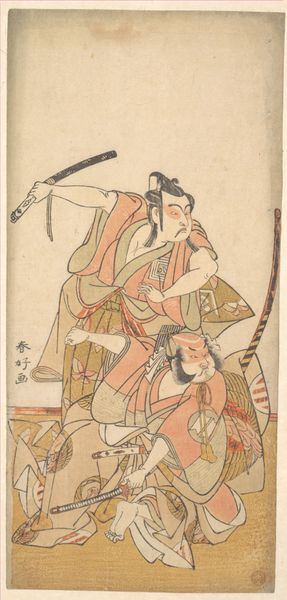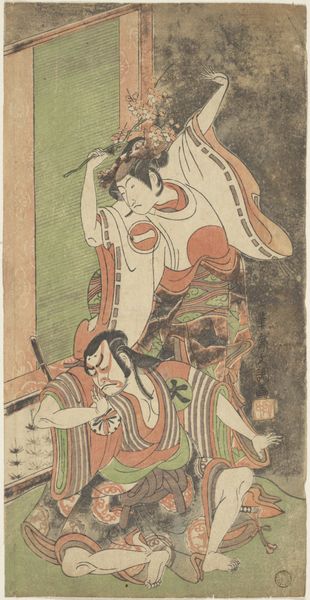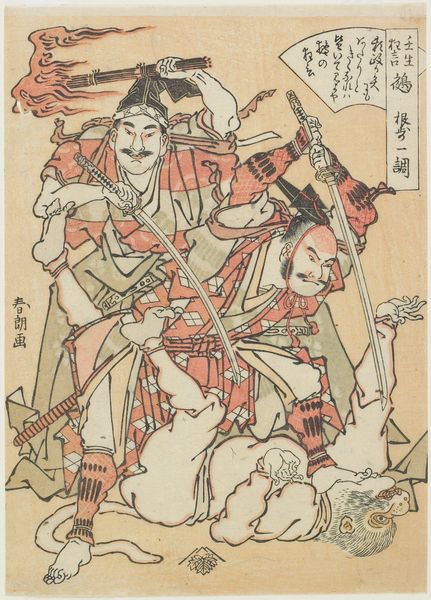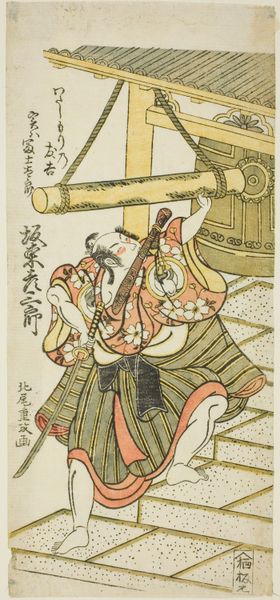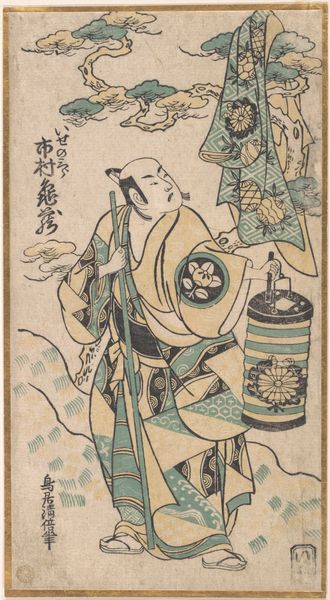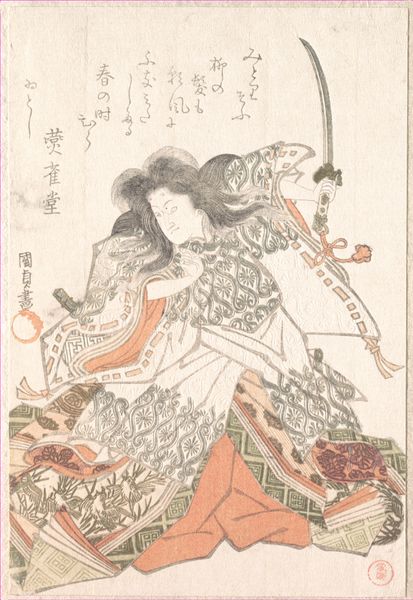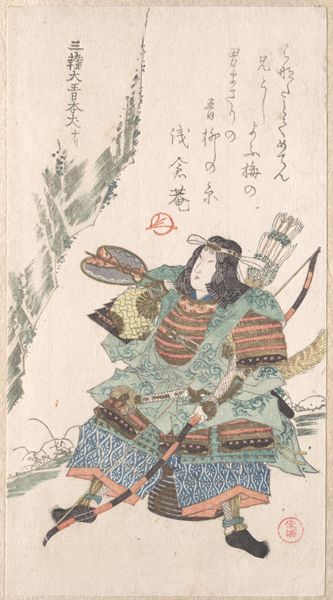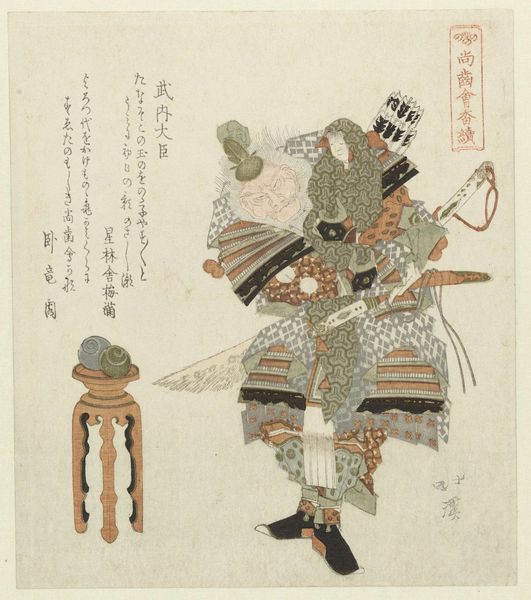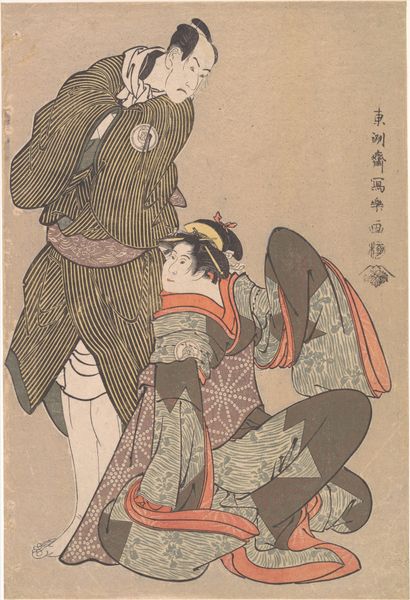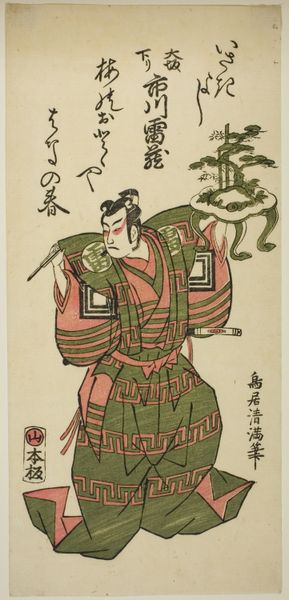
The Actors Ichimura Uzaemon IX as the footman Gunsuke and Sakata Sajuro I as Yamaga no Sashiro in the play "Iro Jogo Mitsugumi Soga," performed at the Ichimura Theater in the first month, 1765 1765
0:00
0:00
print, paper
#
narrative-art
# print
#
asian-art
#
ukiyo-e
#
figuration
#
paper
Dimensions: 12 1/4 × 5 1/2 in.
Copyright: Public Domain
Curator: Let's examine this fascinating print by Torii Kiyomitsu, titled "The Actors Ichimura Uzaemon IX as the footman Gunsuke and Sakata Sajuro I as Yamaga no Sashiro in the play 'Iro Jogo Mitsugumi Soga,'" which dates back to 1765. It captures a scene from a Kabuki performance popular at the time. Editor: It's striking! The energy, even captured in this static medium, feels palpable. The dynamic pose of the standing figure, almost looming over the seated one, immediately catches the eye. There's a clear visual hierarchy at play, dictated by the formal arrangement of the figures and their costumes. Curator: Absolutely. What we are seeing here is not just a performance, but a very carefully structured representation laden with socio-cultural meanings. The Ukiyo-e style provides a fascinating lens through which we can view gender roles and the evolving place of theatre within wider societal power dynamics of the Edo period. It highlights themes of social hierarchy and perhaps resistance through the performances of gendered identity. Editor: The linework is exceptional. Note how Kiyomitsu uses subtle variations in line thickness and density to suggest volume and texture, particularly in the garments and the hair of the standing figure. The limited color palette also contributes to the print's visual harmony, drawing attention to the carefully balanced composition and emphasizing the spatial relationships between the two actors. Curator: And the setting is indicated by the placard reading "Yangtze River". It grounds this interaction within a recognisable, relatable location within shared mythology and history, amplifying the contemporary social commentary inherent to theatrical interpretations. One of the main aspects that draw me in is thinking about what is framed by this play about its place and time. Editor: It's a beautiful distillation of form and function. Every element—color, line, composition—serves to amplify the dramatic tension and narrative clarity of the scene. Curator: Considering the cultural and performative aspects enriches how we view its composition, wouldn’t you agree? Editor: Indeed. I appreciate your framing of it within a performance and as commentary of sorts. Curator: And hopefully, it provides you with some additional insights, our listeners, into this beautiful example of Ukiyo-e printmaking.
Comments
No comments
Be the first to comment and join the conversation on the ultimate creative platform.
